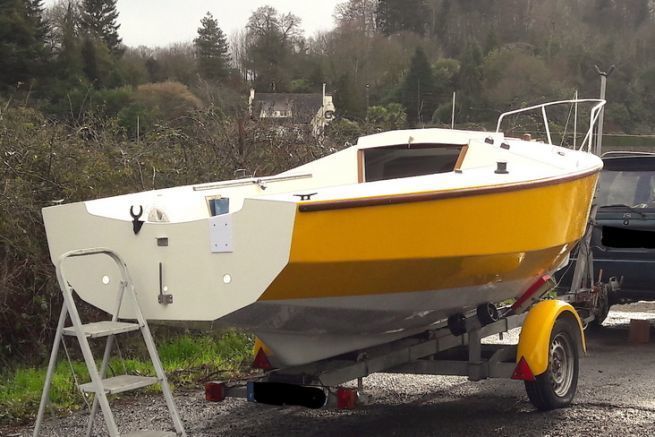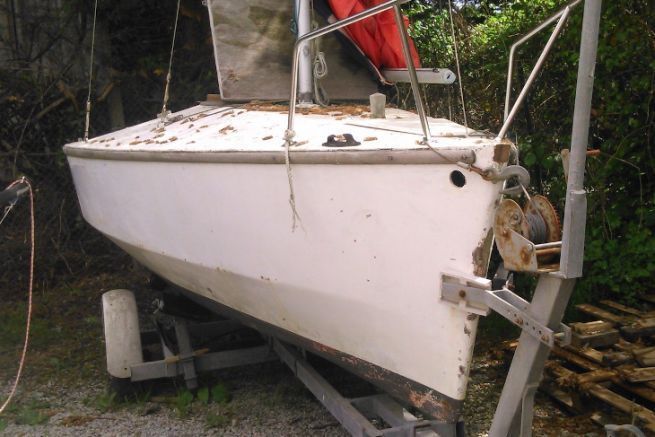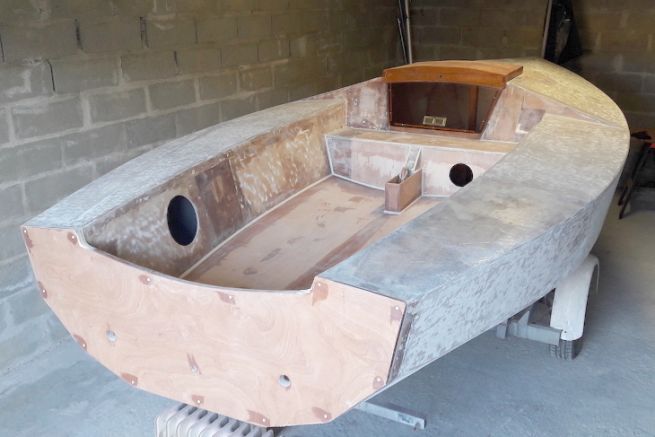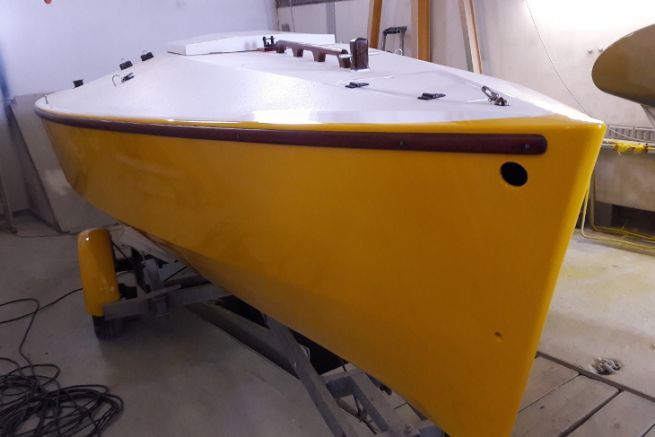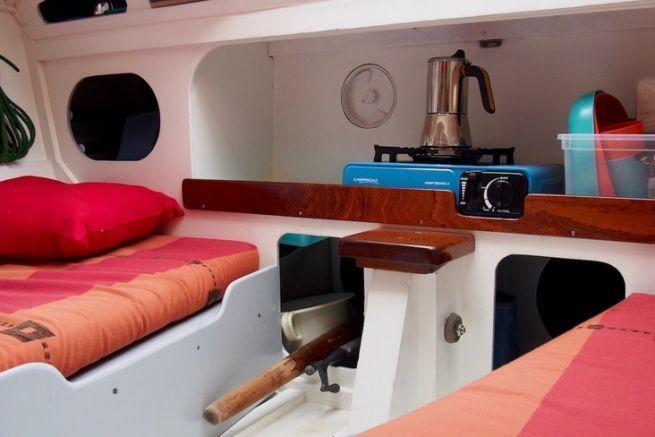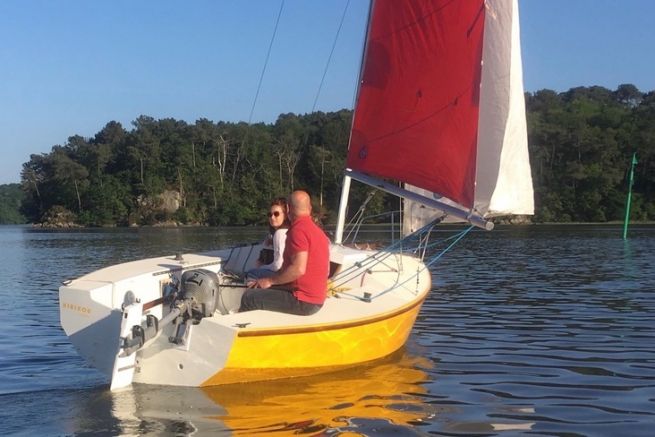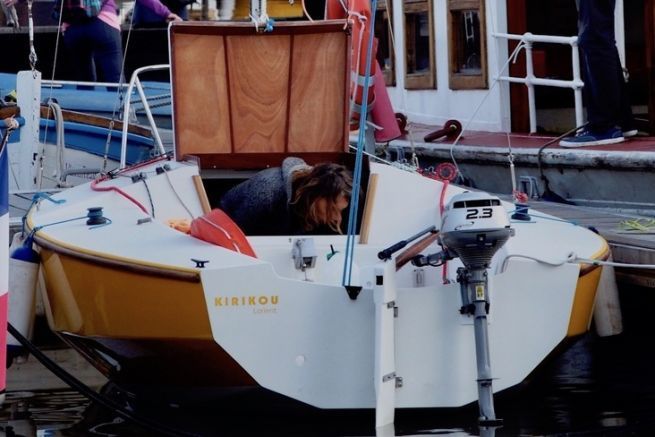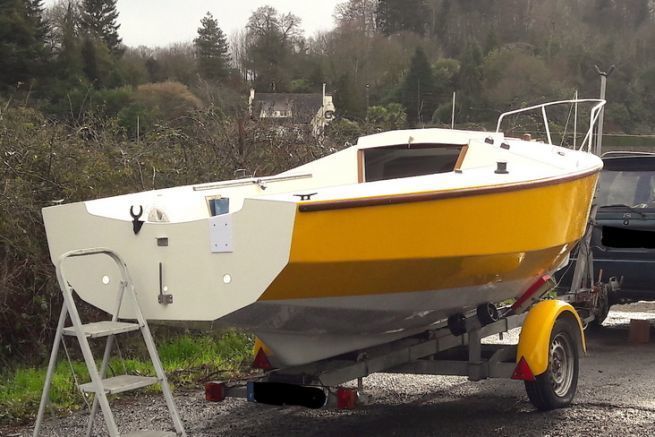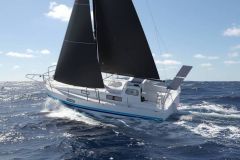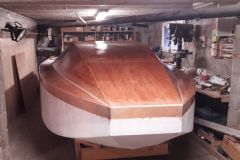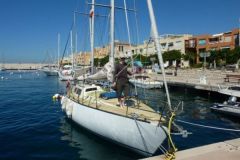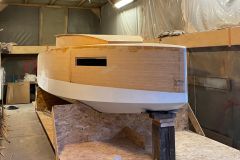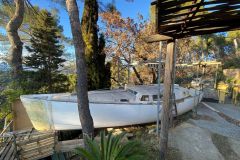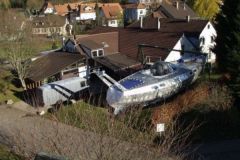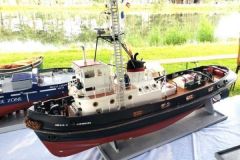Jean-Jacques Herbulot has always been a champion of yachting accessible to all. The main series that came out of his drawing board were proposed by shipyards, but also with plans adapted for amateur construction. This was the case for the Vaurien, the Corsaire, and the Figaro 5, among others. The construction was simplified by the use of plywood, a solid material within the reach of a reasonably skilled amateur and which does not require sophisticated tools.
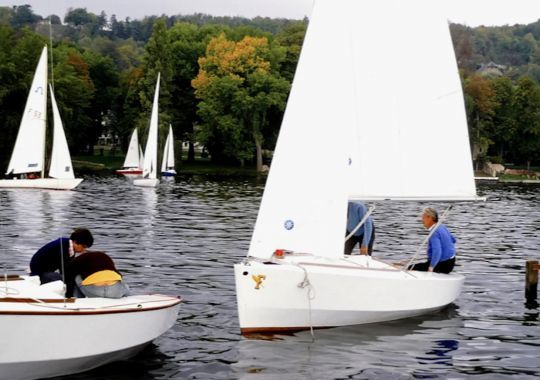
Complete and detailed plans
In the summer of 1975, the daily newspaper Le Figaro presented in its pages a new coastal cruiser. A boat intended to be built by amateurs and defined as: "a cruiser for less than 9000 Francs". The double chine hull is short but elegant. The width offers a good habitability and suggests good marine qualities. Its dimensions make it possible to consider building it in a garage. Aspiring carpenters would order the set of plans from the newspaper. It arrived with a very detailed construction manual and a set of vouchers offering a discount on materials: wood, paint, ballast, rigging, or sails. The designer estimated that it would take about 500 hours to build the boat.
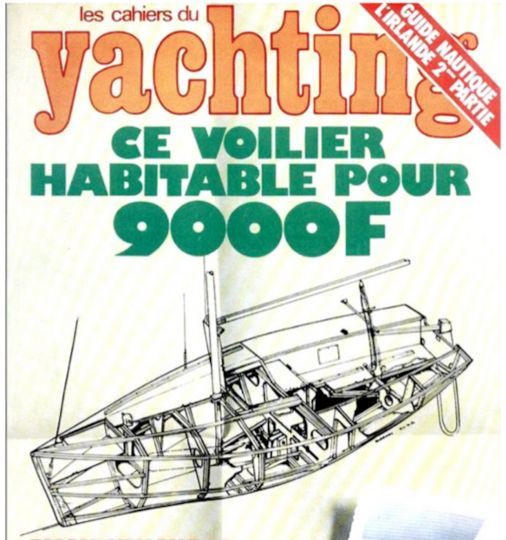
A construction method adapted to amateurs
Two versions are proposed: flush-deck or with a small roof, according to the tastes and the talents of carpenter of each. To facilitate the layout of the couples and partitions, the plan represents them in real size. Finally, to compensate for the inaccuracies of amateurs, the architect has planned for a large sample: apart from the bottom planking, the entire boat is made of 10 mm plywood glued to rails. He planned for the wood to be protected by a layer of roving laminated with polyurethane resin. Despite this, the Figaro is relatively light (450 kg, including 160 of ballast). This makes it easy to handle, tow and launch.
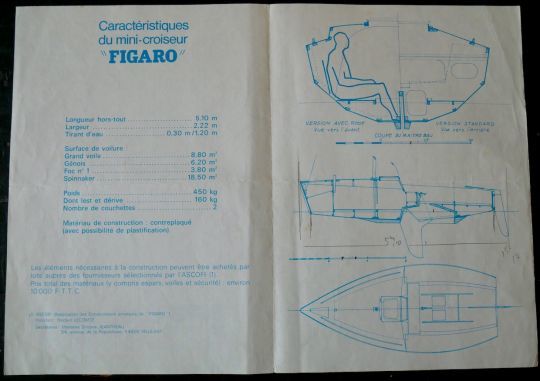
A successful series, easy to build and live
The success is there and nearly 2000 files of plans are sold in 3 years. To accompany the amateurs, a dynamic association, the ASCOFI is born. It proposes mutual aid, tips and other good plans. Little by little, the series grew and the waters of the Paris region saw very competitive regattas. The Figaro 5s also spread to the coasts of France where their crews engaged in exciting nautical jumps. The ease of towing and the modest draught (0.30/1.20 m) allow access everywhere while the small cabin accommodates 2 adults without too much hindrance. With its large self-bailing cockpit, its simple rig to mast alone and its small but well-equipped cabin, it is an easy boat to live with.
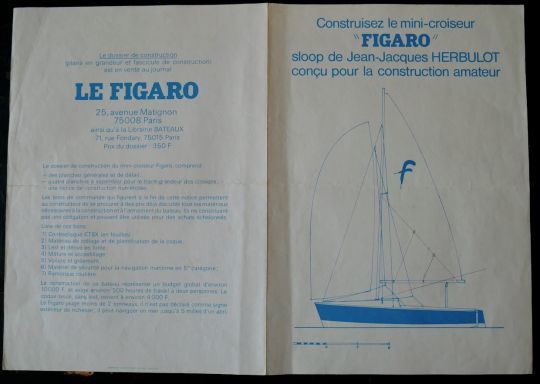
A rig that deserves to be modernized
The Figaro 5 is pleasant under sail and its shape makes it very safe at sea. When flat, its water lines are relatively narrow, while when heeled, it leans on its chine. It is then necessary to really force to approach its limits. On the other hand, the rigging, already basic in the 70s, has aged to the point of being clearly outdated. For the sake of comfort and safety, and given the narrowness of the foredeck, it is recommended, for both renovation and construction, to replace the 3 jibs with a furler. Also, a mainsail with a horn will offer a better balance and better adjustment possibilities than the original one.
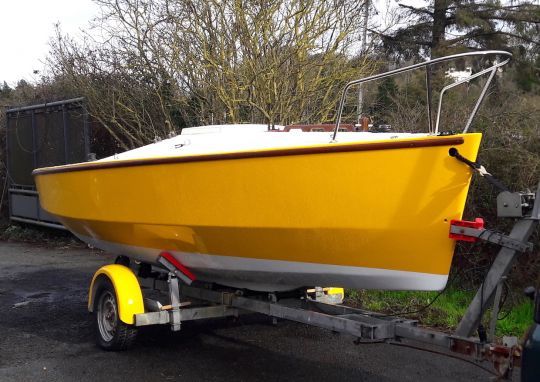
Used or to be built, the Figaro remains relevant.
The owners of Figaro 5 have a blog on which they share their experiences but also announcements of sales. One can find beautiful examples at very reasonable prices, but also others whose wood has suffered, often with infiltrations between the plywood and the PU laminate of the time. As usual for a boat of this era, one should pay attention to the area around the daggerboard, but also to the bottom of the cockpit. The underside is poorly ventilated and not all enthusiasts have taken the care to drill angled holes in the ribs, these holes that allow water to flow to the center point of the boat. The plans can still be obtained from the heirs of J. J. Herbulot ( bateauxherbulot@orange.fr ). On the other hand, it is recommended in this case to acquire a second-hand ballast and daggerboard, or even a wreck on which to recover them.
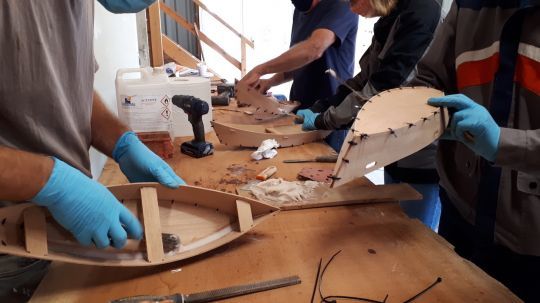
Amateur construction is not as popular as it was in the seventies. Yet it is an exciting adventure, whether it is to build an annex or a more ambitious unit. Several architects specialize in this type of design, including François Vivier, Pierre Delion and François Lucas. For its part, the Grand Large de Saint Briac shipyard offers not only kits of digitally cut panels, but also courses that allow participants to become familiar with the main techniques of epoxy before starting out. Other courses also exist.

 /
/ 